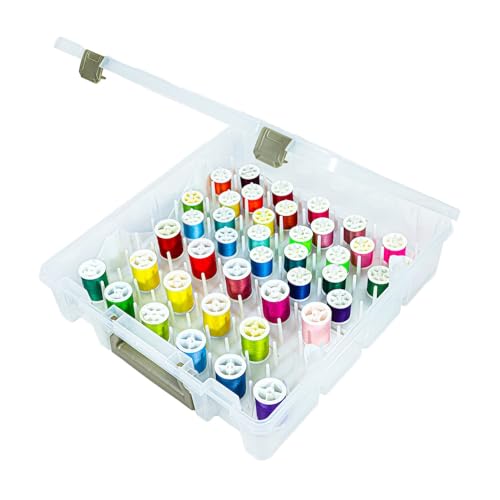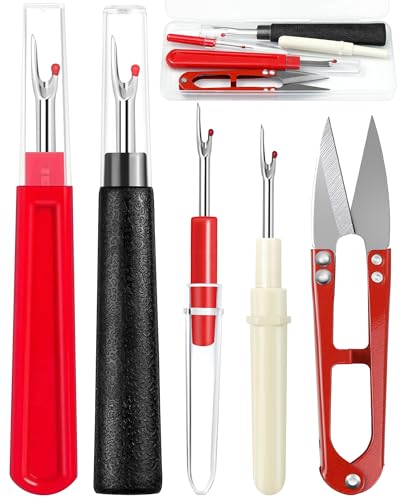Ever found yourself tangled in a mess of sewing thread? You’re not alone. Keeping your sewing threads organized can save time and reduce frustration, making your crafting experience much more enjoyable.
Whether you’re a seasoned seamstress or just starting out, knowing the best ways to store your sewing thread can make a world of difference. From simple DIY solutions to clever storage products, we’ve got tips that will keep your threads neat and ready for your next project. Let’s dive into some creative and practical ways to keep your sewing space tidy and efficient.
Understanding Thread Storage Needs
Organizing sewing threads impacts your crafting efficiency. Proper storage maintains thread quality and ensures it’s ready to use.
Types of Sewing Threads
Different types of sewing threads require varied storage methods. Some common thread types include:
- Cotton Threads: Suitable for natural fabrics and require a cool, dry place.
- Polyester Threads: Durable and versatile, ideal for general sewing.
- Silk Threads: Best stored away from light to prevent fading.
- Nylon Threads: Strong and elastic, often used for outdoor and upholstery projects.
- Specialty Threads: Metallic, embroidery, and invisible threads need protection from tangling and moisture.
Factors Affecting Thread Longevity
Several factors influence the longevity of sewing threads:
- Light Exposure: Prolonged exposure to light can cause threads to fade and weaken.
- Humidity: High humidity can lead to mold growth and weaken thread fibers.
- Temperature: Extreme temperatures can degrade thread quality.
- Pests: Insects can damage natural fibers like cotton and silk.
- Dust: Dust accumulation can make threads dirty and brittle.
Store threads in a controlled environment to extend their lifespan. Use airtight containers to protect from pests and humidity. Store away from direct light and heat sources.
Maintaining organized and properly stored sewing threads enhances your crafting experience and preserves the quality of materials.
Optimal Storage Solutions
Storing your sewing thread properly ensures durability and ease of access. Consider various solutions to keep your thread organized and in top condition.
Using Thread Racks
Thread racks offer an excellent way to store and display your sewing threads. These racks keep threads visible and easily accessible. Look for wall-mounted or freestanding options. Mount wall racks in well-lit areas to quickly see your thread selection. However, ensure racks are away from direct sunlight to prevent thread degradation.
Utilizing Drawer Dividers
Drawer dividers provide an effective solution for organizing threads in drawers. These dividers create compartments to separate different types of threads. Use clear dividers to quickly identify thread colors. Place dividers in sturdy, clean drawers to avoid dust and contamination. Group threads by material or color for easy retrieval. This method keeps threads neatly stored and reduces the risk of tangling.
Vacuum Sealed Containers
Vacuum-sealed containers offer ideal storage for preserving thread quality. These containers protect threads from moisture, pests, and dust. Place threads in containers and use a vacuum sealer to remove air. Store containers in a cool, dark area to further extend thread longevity. This method is especially beneficial for specialty threads like silk or metallic ones, which are more susceptible to environmental damage.
Innovative DIY Thread Storage Ideas
Discovering creative ways to store your sewing thread can help keep your workspace tidy and your materials in top condition.
Repurposing Household Items
Repurposing common household items can create effective thread storage solutions. Empty spice racks can hold spools of thread neatly, providing easy access (ensure they’re clean before use). Use clear plastic egg cartons to organize small spools; their compartments prevent tangling. Attach magnetic strips inside drawers to keep metal bobbins in place, avoiding disarray.
Creating Custom Storage Boards
Creating custom storage boards can perfectly tailor your space to your needs. Pegboards with hooks can store spools in an accessible manner, customizable to any wall size. Corkboards with push pins can secure small spools or bobbins, clustering by color or type for quick identification. Using foam boards to create spool-shaped pins can organize threads by type, keeping your workspace organized efficiently.

Assessing Commercial Thread Storage Products
Organizing your sewing threads enhances your crafting experience by ensuring efficient access and preservation.
Pre-made Thread Organizers
Pre-made thread organizers provide convenience and functionality. Thread racks typically feature multiple pegs for holding spools upright, allowing easy color identification. Thread boxes, often with segmented compartments, keep spools separated and protect them from dust. Wall-mounted thread holders free up workspace while keeping threads visible and accessible. Thread carousels, though taking up more space, rotate for quick spool selection.
Comparing Container Materials
Different materials offer varied benefits for thread storage. Plastic containers are popular since they’re lightweight, clear for easy viewing, and airtight to protect against moisture. Wood organizers are sturdier and often aesthetically pleasing, ideal for dedicated craft rooms but might lack airtight seals. Metal containers, durable and pest-resistant, can add an industrial look but may require liners to prevent thread snagging. Choose based on your storage conditions and aesthetic preferences.
Remember, the key considerations include protecting threads from light, dust, and humidity.
Conclusion
By taking a little time to properly store your sewing threads, you can ensure they stay in top condition for all your projects. Whether you choose DIY solutions or pre-made organizers, the key is to find what works best for you and your space. Remember to keep your threads away from light, dust, and humidity to maintain their quality. With the right storage, you’ll always have the perfect thread ready to go, making your sewing experience smoother and more enjoyable. Happy sewing!

















